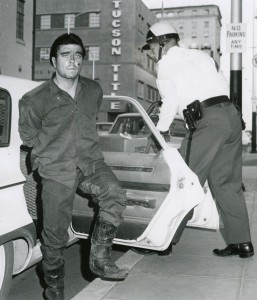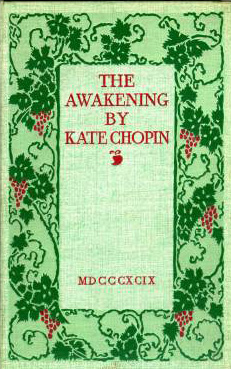The central historical event of Their Eyes Were Watching God is the Great Okeechobee Hurricane of 1928. The hurricane had already wreaked havoc across the Caribbean, most notably on the Leeward Islands, Puerto Rico, and the Bahamas. The storm made landfall in South Florida on September 17 in Palm Beach County. The internal pressure of the storm was 929 millibars, with wind speeds of around 145 mph, ranking it sixth on the list of most intense storms to hit the United States. Only four storms have made landfall in Florida with higher wind speeds: the unnamed hurricane of 1919, the Labor Day hurricane of 1935, Hurricane Andrew in 1992 and Charley in 2004. The Saffir-Simpson scale that divides hurricanes into categories had not yet been invented, but based on these measurements, the Great Okeechobee hurricane would have made landfall in Florida at Category 4.
 Although the storm caused a great deal of property damage in Palm Beach and other coastal areas, the real devastation happened as the storm moved inland over Lake Okeechobee (Okeechobee is a Seminole word for “big water”). Strong rains in the weeks before the storm had raised the water level in the lake. Storm winds drove water to the south end of the lake, and in two locations, the levee surrounding the lake broke.
Although the storm caused a great deal of property damage in Palm Beach and other coastal areas, the real devastation happened as the storm moved inland over Lake Okeechobee (Okeechobee is a Seminole word for “big water”). Strong rains in the weeks before the storm had raised the water level in the lake. Storm winds drove water to the south end of the lake, and in two locations, the levee surrounding the lake broke.
In his book Okeechobee Hurricane, Lawrence E. Will described the flood this way:
The period of the lull here had apparently been between 8:30 and 9:30 that night. The exact time of the breaking of the dike is difficult to determine. There were several breaks and they may have occurred at slightly different times. Although it took an appreciable time for the flood to arrive in Belle Glade, those in the hotel said that when it did arrive, it rose on the steps at the rate of an inch a minute. The highest crest, which was during the maximum velocity of the wind during the second phase of the storm, was, according to my recollection, at 10:20 PM. This crest was a rolling swell of short duration, after which the water fell about a foot and remained nearly constant for twenty minutes. This mark in Belle Glade was about seven feet above the ground, nearer the lake it was a great deal higher, for example, in Stein’s house at Chosen, 11 feet 3 inches, and on Torry (Island) 11 feet, 8 inches, and similar heights in South Bay. As the flood advanced, it necessarily fanned out, becoming shallower. At the (University of Florida) Experiment Station its maximum depth was three feet, and that, strangely enough, according to foreman Tedder, was after daylight.
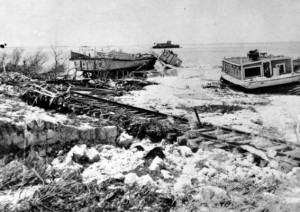 As the category 4 hurricane moved inland, the strong winds piled the water up at the south end of the lake, ultimately topping the levee and rushing out onto the fertile land. The storm surge alone was nearly ten feet. The floodwaters in Belle Glade, on the southern shore of the lake, rose at a rate of one inch per minute and nearly topped seven feet. Thousands of people, mostly non-white migrant farm workers, drowned as water several feet deep spread over an area approximately 6 miles deep and 75 miles long around the south end of the lake.
As the category 4 hurricane moved inland, the strong winds piled the water up at the south end of the lake, ultimately topping the levee and rushing out onto the fertile land. The storm surge alone was nearly ten feet. The floodwaters in Belle Glade, on the southern shore of the lake, rose at a rate of one inch per minute and nearly topped seven feet. Thousands of people, mostly non-white migrant farm workers, drowned as water several feet deep spread over an area approximately 6 miles deep and 75 miles long around the south end of the lake.
The initial death toll set by the Red Cross was just under 2,000 people. However, that number most likely minimized the actual loss of life in order to prevent a negative effect on tourism to the state. The fact that most of the dead were migrant workers also played a part. The National Weather Service set the official death toll at more than 2,500* in 2003. The asterisk exists because the true death toll is unknown. Many of the bodies of the migrant workers were washed into the Everglades and never recovered. This storm was the second most devastating in terms of loss of life in U.S. history, ranking behind the Galveston Hurricane of 1900.
The burial scenes depicted in Their Eyes Were Watching God illustrate the difficulty in dealing with the huge loss of life, animal and human, and the necessity of burying so many in the short time required by Florida’s heat and humidity. They also call into attention the additional effect that segregation had on the tragedy. Whites were buried first, as many in private graves as possible until the heat demanded other measures. Blacks were more likely to have been interred in mass graves. Separate memorial services were held for white and black victims. Markers commemorating the mass burials may be found in West Palm Beach, one at Woodlawn Cemetery, where nearly 70 whites were buried, and another close to the intersection of 25th Street and Tamarind Avenue which marks the resting place of nearly 700 blacks. This marker is listed on the National Register of Historic Places.
Liz Doup’s story in the Broward Sun-Sentinel discusses the human cost of the hurricane, including interviews from survivors. Read the story here.
Information from:
Hurricanes: Science and Society, http://www.hurricanescience.org/history/storms/1920s/Okeechobee/
Memorial Page for the 1928 Okeechobee Hurricane, http://www.srh.noaa.gov/mfl/?n=okeechobee

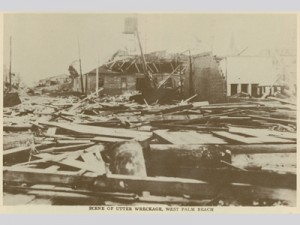
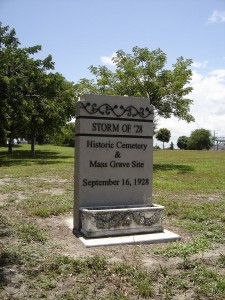
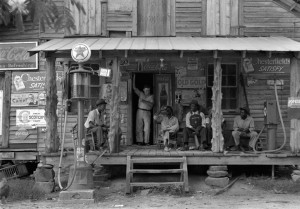
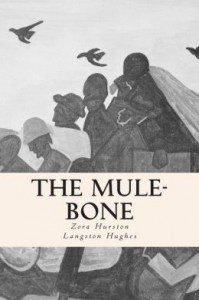
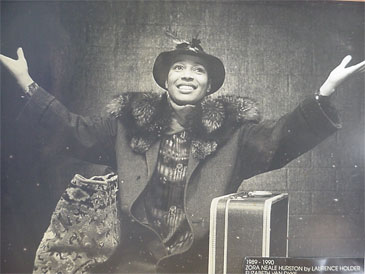
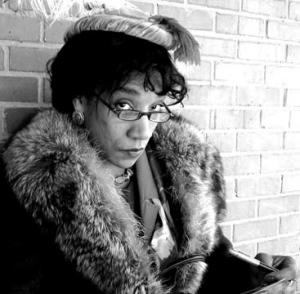


 Mary Alice, James Earl Jones and Courtney Vance in Fences at Yale Repertory Theatre. William B. Carter, 1985. Courtesy of Yale Repertory Theatre
Mary Alice, James Earl Jones and Courtney Vance in Fences at Yale Repertory Theatre. William B. Carter, 1985. Courtesy of Yale Repertory Theatre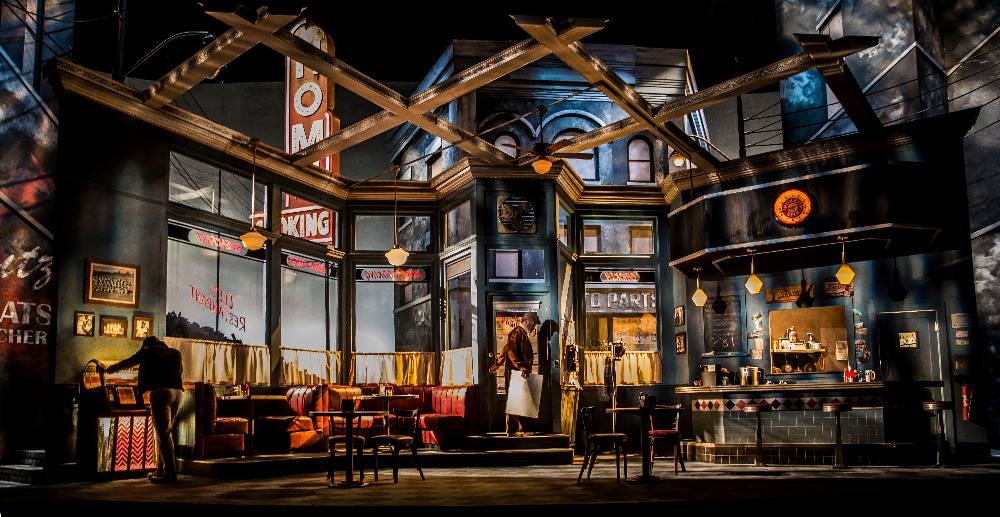 Production of Two Trains Running at the Goodman Theatre in Chicago.
Production of Two Trains Running at the Goodman Theatre in Chicago.

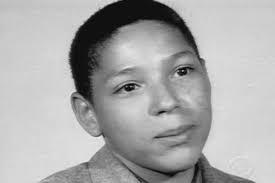 Young August Kittel went to parochial school near his Hill District home on Bedford Avenue until his parents’ divorce. He, his mother, and his siblings moved from their historically black community to the Oakland neighborhood, which was primarily white. The constant bigotry of classmates led him to change high schools three times by the time he was fifteen, when he withdrew from formal school and began educating himself independently at Pittsburgh’s famed Carnegie Library. In 1962, at age 17, he enlisted in the Army but left after a year of service. After his father’s death in 1965, he took the name August Wilson to honor his mother.
Young August Kittel went to parochial school near his Hill District home on Bedford Avenue until his parents’ divorce. He, his mother, and his siblings moved from their historically black community to the Oakland neighborhood, which was primarily white. The constant bigotry of classmates led him to change high schools three times by the time he was fifteen, when he withdrew from formal school and began educating himself independently at Pittsburgh’s famed Carnegie Library. In 1962, at age 17, he enlisted in the Army but left after a year of service. After his father’s death in 1965, he took the name August Wilson to honor his mother. Pittsburgh’s Carnegie Library c. 1935
Pittsburgh’s Carnegie Library c. 1935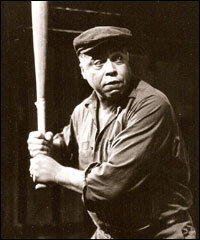 , was selected in 1982. Through the Conference, Wilson was introduced to the artistic director of the Yale Repertory Theatre, Lloyd Richards, who nurtured trailblazing playwright Lorraine Hansberry, the author of A Raisin in the Sun and the first African-American to have a play produced on Broadway. Richards helped shepherd the development of Ma Rainey’s Black Bottom and ended up directing Wilson’s first six plays on Broadway, including the 1987 Pulitzer Prize-winning Fences. Wilson earned his second Pulitzer in 1990 for The Piano Lesson.
, was selected in 1982. Through the Conference, Wilson was introduced to the artistic director of the Yale Repertory Theatre, Lloyd Richards, who nurtured trailblazing playwright Lorraine Hansberry, the author of A Raisin in the Sun and the first African-American to have a play produced on Broadway. Richards helped shepherd the development of Ma Rainey’s Black Bottom and ended up directing Wilson’s first six plays on Broadway, including the 1987 Pulitzer Prize-winning Fences. Wilson earned his second Pulitzer in 1990 for The Piano Lesson.
 Daniel Defoe’s 1719 tale Robinson Crusoe exemplifies many of the hallmarks of these tales we find familiar: a stranded hero, a deserted island, meetings and clashes with various native cultures, and eventual rescue, where the hero returns home a changed man for his experience. The book’s popularity spawned an entire subgenre of literature called Robinsonade, all of which contain a stranded hero, a new beginning, encounters with natives, and commentary on society. These influences can be seen in Jonathan Swift’s Gulliver’s Travels (1726), a particularly biting piece of satire that uses the castaway motif to savage various aspects of English society, and the modern film Cast Away (2000),
Daniel Defoe’s 1719 tale Robinson Crusoe exemplifies many of the hallmarks of these tales we find familiar: a stranded hero, a deserted island, meetings and clashes with various native cultures, and eventual rescue, where the hero returns home a changed man for his experience. The book’s popularity spawned an entire subgenre of literature called Robinsonade, all of which contain a stranded hero, a new beginning, encounters with natives, and commentary on society. These influences can be seen in Jonathan Swift’s Gulliver’s Travels (1726), a particularly biting piece of satire that uses the castaway motif to savage various aspects of English society, and the modern film Cast Away (2000),  in which Tom Hanks plays a stranded Federal Express executive who survives alone on an island in the South Pacific for four years with the help of the contents of FedEx packages that washed up on the island with him, including a personified volleyball named Wilson.
in which Tom Hanks plays a stranded Federal Express executive who survives alone on an island in the South Pacific for four years with the help of the contents of FedEx packages that washed up on the island with him, including a personified volleyball named Wilson. Part of The Coral Island‘s popularity was its clear messages about morality and choices. Ralph, Jack, and Peterkin of the story are tested by their isolation, their encounters with pirates, and their interactions with the cannibalistic inhabitants of nearby islands. Through a series of adventures, the boys’ friendship and loyalty are tested and proved, and at the end the three friends, older and wiser, sail back to England together. Ballantyne included them in a sequel, The Gorilla Hunters, in 1861.
Part of The Coral Island‘s popularity was its clear messages about morality and choices. Ralph, Jack, and Peterkin of the story are tested by their isolation, their encounters with pirates, and their interactions with the cannibalistic inhabitants of nearby islands. Through a series of adventures, the boys’ friendship and loyalty are tested and proved, and at the end the three friends, older and wiser, sail back to England together. Ballantyne included them in a sequel, The Gorilla Hunters, in 1861.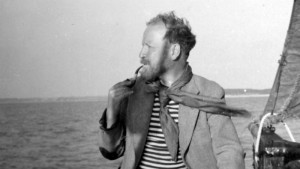 In 1945, Golding resumed his teaching post at Bishop Wordsworth’s School and began writing again. Some of his reviews and essays were published, but he found no publisher for the novels he had written. In spite of this, Golding persisted. He concluded that since he would probably never be published, he would simply write for his own satisfaction. One night after reading a bedtime story to his children, he spoke with his wife about his true desire, to write a book about what people are really like. Boys’ adventure books such as Coral Island and Treasure Island weren’t believable, and he wanted to trace the darkness that he witnessed as being part of every human being. The result was Lord of the Flies, published in 1954 when Golding was 43. Lord of the Flies sold well when first published;however, it sold fewer than 3,000 copies in the United States and soon went out of print. Later, the novel found and retained an influential audience and eventually became a favorite of college students, rivaled only by J. D. Salinger’s The Catcher in the Rye. Later Golding published The Inheritors (1955), Pincher Martin (1956), and Free Fall (1959).
In 1945, Golding resumed his teaching post at Bishop Wordsworth’s School and began writing again. Some of his reviews and essays were published, but he found no publisher for the novels he had written. In spite of this, Golding persisted. He concluded that since he would probably never be published, he would simply write for his own satisfaction. One night after reading a bedtime story to his children, he spoke with his wife about his true desire, to write a book about what people are really like. Boys’ adventure books such as Coral Island and Treasure Island weren’t believable, and he wanted to trace the darkness that he witnessed as being part of every human being. The result was Lord of the Flies, published in 1954 when Golding was 43. Lord of the Flies sold well when first published;however, it sold fewer than 3,000 copies in the United States and soon went out of print. Later, the novel found and retained an influential audience and eventually became a favorite of college students, rivaled only by J. D. Salinger’s The Catcher in the Rye. Later Golding published The Inheritors (1955), Pincher Martin (1956), and Free Fall (1959).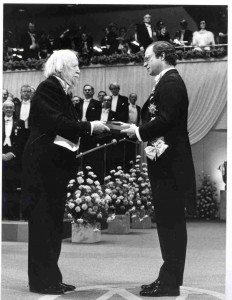
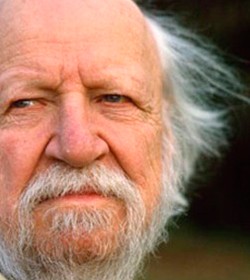 When looking at Golding’s philosophical attitude about Lord of the Flies, one interpretation is that each individual must acknowledge his connection to all people. Humanity’s problems stem from lack of awareness of this truth. People remain trapped inside themselves, too self-absorbed to look at the world around them. Only if people are able to see themselves as part of the whole, not as islands, will they find salvation. Humans must somehow find a way to connect with outer reality. Golding believes that humans’ intelligence will help them to make this necessary connection: one cannot change basic human nature, but can recognize and understand it. In so doing, individuals can willfully choose to suppress the savagery beneath their humanity.
When looking at Golding’s philosophical attitude about Lord of the Flies, one interpretation is that each individual must acknowledge his connection to all people. Humanity’s problems stem from lack of awareness of this truth. People remain trapped inside themselves, too self-absorbed to look at the world around them. Only if people are able to see themselves as part of the whole, not as islands, will they find salvation. Humans must somehow find a way to connect with outer reality. Golding believes that humans’ intelligence will help them to make this necessary connection: one cannot change basic human nature, but can recognize and understand it. In so doing, individuals can willfully choose to suppress the savagery beneath their humanity.



